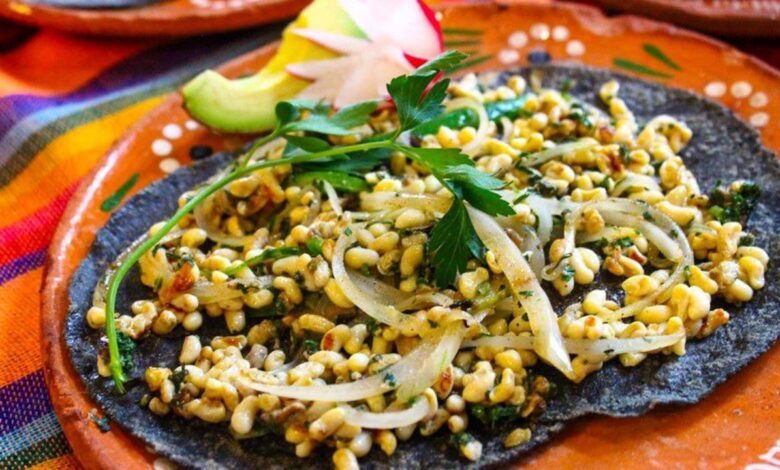Discover the Delightful Escamoñes: A True Delicacy of Spanish Cuisine

Spanish cuisine is a rich and diverse blend of flavors, traditions escamoñes, and unique ingredients that reflect the country’s culture and history. One such delightful dish that has gained popularity over the years is escamoñes. This rare and exquisite ingredient, often considered a delicacy, is not just a treat for the taste buds, but also a reflection of the Spanish culinary heritage. In this article, we will explore what escamoñes are, how they are prepared, and why they deserve a special place in your culinary repertoire.
What are Escamoñes?
Escamoñes are the edible larvae of the palm weevil, a species of insect that is commonly found in Spain, particularly in the regions of Valencia, Murcia, and parts of Andalusia. These larvae are harvested from the trunks of palm trees, where they grow by feeding on the inner fibers of the tree. The name “escamoñes” is derived from the Spanish word “escamón,” which refers to the young, tender larvae of the palm weevil.
While escamoñes are not a widely known or commonly consumed food outside of Spain, they have been an integral part of Spanish cuisine for centuries, especially in the southern coastal regions. The larvae are known for their delicate texture, slightly sweet flavor, and rich nutritional value. They are often compared to other exotic delicacies like escargot (snails) or caviar due to their luxurious and rare nature.
How Are Escamoñes Harvested?
Harvesting escamoñes is a meticulous process that requires skill and knowledge of the palm trees. Palm weevil larvae are found inside the trunks of certain types of palm trees, such as the Phoenix canariensis and Phoenix dactylifera. The larvae are usually extracted from the inner part of the trunk, where they have been feeding and growing.
The process of harvesting escamoñes is not as simple as it may seem. It requires cutting into the trunk of the palm tree to reach the larvae. Once the larvae are extracted, they are carefully cleaned and prepared for consumption. The harvesting process is highly sustainable, as it ensures the palm tree remains healthy and continues to grow after the larvae have been collected.
Nutritional Value of Escamoñes
Escamoñes are not only a tasty delicacy but also pack a surprising amount of nutritional benefits. These larvae are high in protein, making them an excellent source of sustenance. Additionally, they contain healthy fats, vitamins, and minerals, including B vitamins, iron, and calcium. As a result, escamoñes have long been valued in rural areas of Spain for their energy-boosting properties and ability to nourish the body.
In recent years, escamoñes have also gained recognition for their potential to be a more sustainable source of protein compared to traditional livestock farming. With the growing concern over the environmental impact of meat production, escamoñes offer a more eco-friendly alternative to conventional animal-based proteins.
How to Cook and Enjoy Escamoñes
Escamoñes are typically enjoyed in various traditional Spanish dishes, and their delicate flavor and texture make them a versatile ingredient in both savory and sweet recipes. The most popular way to enjoy escamoñes is by cooking them in a simple and flavorful dish, often with garlic, olive oil, and herbs.
Escamoñes a la Plancha (Grilled Escamoñes)
One of the most common ways to prepare escamoñes is by grilling them. The process involves cooking the larvae on a hot grill or frying pan, giving them a slightly crispy texture on the outside while preserving their tender interior. To prepare escamoñes a la plancha, simply heat some olive oil in a pan, add the escamoñes, and cook for a few minutes until golden brown. You can season the dish with salt, pepper, and a squeeze of lemon juice to enhance its flavors. This dish is often served as an appetizer or as part of a tapas spread.
Escamoñes en Salsa (Escamoñes in Sauce)
For a more elaborate preparation, escamoñes can be cooked in a flavorful sauce. A popular Spanish recipe involves sautéing escamoñes in garlic and olive oil before adding white wine, tomato sauce, and aromatic herbs such as thyme and bay leaves. The sauce envelops the larvae, adding depth and richness to their natural flavor. This dish can be served with rice, potatoes, or crusty bread to soak up the savory sauce.
Escamoñes Tacos (Escamoñes in Tacos)
For a fusion twist, escamoñes can also be used as a filling for tacos. In this recipe, escamoñes are sautéed with onions, garlic, and chili peppers, then served in soft corn tortillas with a variety of toppings, such as avocado, cilantro, and a squeeze of lime. This dish brings together the unique flavor of escamoñes with the bold spices and fresh ingredients of Mexican cuisine, creating an exciting culinary experience.
Escamoñes in Paella
While paella is typically known for featuring seafood, escamoñes can be a unique addition to this classic Spanish dish.
Conclusion
Escamoñes may be a rare and exotic delicacy, but they hold a special place in Spanish cuisine. With their delicate flavor, tender texture, and impressive nutritional benefits, escamoñes offer a unique dining experience that can be enjoyed in various dishes. Whether prepared simply on the grill or as part of an elaborate paella, these larvae are sure to delight adventurous food lovers and those seeking new culinary experiences.
Beyond their gastronomic appeal, escamoñes represent a sustainable food source with the potential to shape the future of cuisine. As the world embraces more eco-friendly alternatives, escamoñes could become an essential part of a sustainable food system. So, the next time you’re looking to try something new and exciting, consider giving escamoñes a try – a true delicacy that captures the essence of Spanish culinary traditions.

